A new type of insect kills in 2 hours. Residents of Kazakhstan are being frightened by a terrible killer beetle via WhatsApp
“Be extremely careful and warn children!”, “Death within two hours”... As a respectable mother, I am a member of several parent WhatsApp chats, and every time someone sends a photo of a scary-looking insect with dire warnings. At this point you can’t help but think: maybe all the karakurts, tsetse flies and ticks really have a serious competitor?
A search on the World Wide Web produced several dozen links to the required news. All of them are dated last fall. As the unnamed authors claim, the new insect appeared in India and is most likely the product of a scientific experiment that got out of control. And supposedly there are already victims.
“If you ever see this insect, do not try to kill it with your bare hands or even touch it. Upon contact, a person becomes infected with a virus that quickly affects the entire body. This horror was first noticed in India. Share this information with your family and friends. Let children be especially attentive, because they love to pick up all sorts of bugs and insects,” fears one of the news aggregators.
But the search for a photo of an insect unknown to science refers to images of a water bug that has been fully studied by entomologists. As it turned out, the supposed capsules with poison on the back of an unknown animal are carried by young animals, its giant water bug, which actually lives in India, for greater safety.
A person believes in what he wants. Anyone who has critical thinking and a high level of intelligence usually checks such controversial news without difficulty, but, unfortunately, not all of them. Some people seem to actually enjoy scaring people with such fakes (fakes. - Ed.) others, - comments on the regular distribution of horror stories on social networks Director of the Legal Media Center PF Diana OKREMOVA.
She herself often organizes seminars for young journalists, where she explains in detail how to spot fake news. But it seems that with the development of the Internet, this kind of educational program must be carried out for the entire population.
Any publication must give a specific answer to three questions: what, where, when? With newsletters on social networks, everything is a little more complicated, because the information is compressed into one or two sentences. But there still needs to be some specifics that can be verified, says the media expert.
Diana Okremova advises to be especially careful about publications that begin with the words: “Attention!”, “Very important!” and ending with the words: “Maximum repost.” Often such loud calls serve one purpose: to attract the user’s attention to something insignificant and distract from something important.
With the beginning of spring, the activity of many species of insects and arachnids increases. In Russia, ticks are among the first to come to life - this is a dangerous arthropod, which, due to its small size, is almost invisible. In addition to ticks, our country is home to countless arachnids and insects that are harmful to humans.
PLIERS
These are the most numerous representatives of the arachnid class. Currently there are about 48 thousand of them. different types. But not all of them are dangerous; it is believed that only about 10% of ticks carry dangerous diseases. These include encephalitis tick, taiga tick and others.
At the same time, in the climate of central Russia, the most common ticks are those that transmit encephalitis. It is in spring and early summer that ticks are most active. Many of them sit on tree branches or hang on spider webs, waiting for their prey. Therefore, the most dangerous areas can be wooded areas, forest paths and young aspen stands.
The tick bite is completely invisible at first and does not cause any inconvenience. But within two to three days after the bite, the area of the body in which the tick that bit you begins to turn red and swell. In order to avoid serious consequences, it is necessary to examine the body after a trip to nature. And also consult a doctor immediately and under no circumstances try to remove the tick yourself. The worst consequence of an encephalitis tick bite is the possibility of joint damage and subsequent disability.
Another type of ticks - spider mite, it affects the leaves of cultivated plants and spoils the harvest. And the smallest of the mites - representatives of the Tarsonemus species - live in house dust and cause severe allergies in people and animals, as well as irritation and redness in various parts of the body.
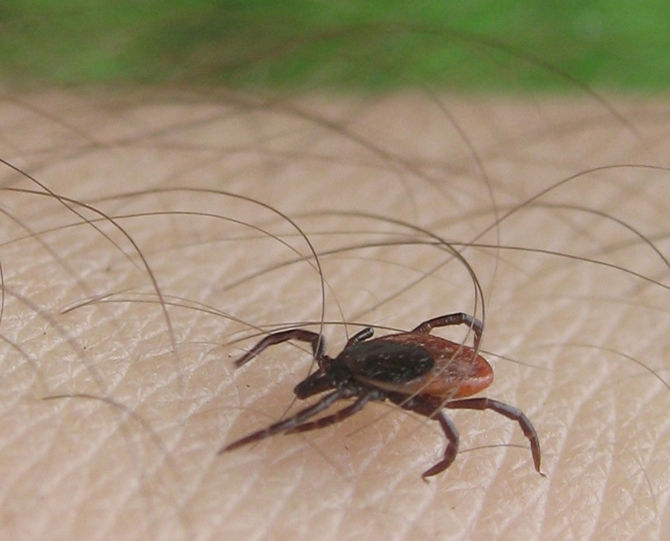
Horsefly
Horseflies are a dangerous insect species; in Russia, its population reaches more than 3 thousand individuals. Their active period is in the summer, and neither heat nor rain can stop them. They live mainly in forests and steppes. They are most active in daytime, especially in hot, sunny weather. But only the female horsefly is dangerous; she bites humans and cattle and drinks blood. In Russia you can find about 200 species of horseflies.
Horseflies need blood for nutrition and for the formation of substances necessary for reproduction. Horseflies can carry dangerous diseases, including anthrax and polio. Also, a wound resulting from a horsefly bite can fester and become inflamed, which also threatens human health. When a horsefly bites, it injects a special substance into the human body, which includes anticoagulants. They cause severe irritation to the skin and can impair blood clotting. In some people, a horsefly bite can trigger an allergic reaction, which can range from swelling to fainting. In addition, they threaten the health of animals and can cause the death of cows, camels and other artiodactyls.
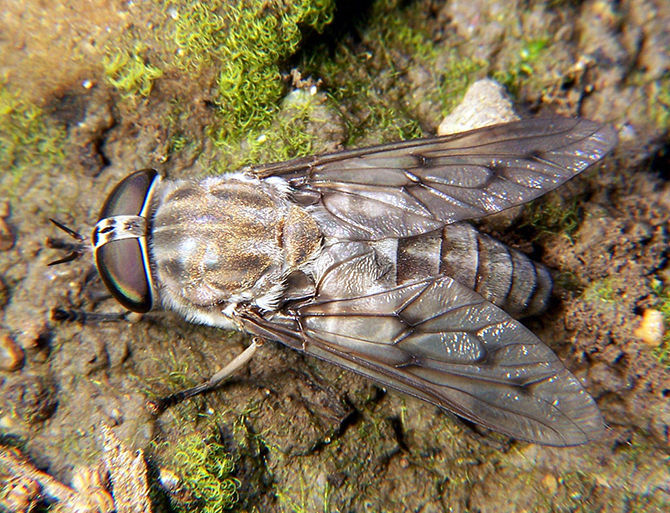
Blister beetle
The blister beetle is an extremely dangerous poisonous insect that lives in the regions of Central Asia, the Caucasus and Kazakhstan. About 70 are known various types this insect. In appearance, this beetle is not at all scary and looks like a ladybug with a slightly elongated body. They live in hot regions, mainly in forest areas, and can even harm plants and shrubs.
The danger of this little beetle lies in the composition of its poison - it contains the substance cantharidin. This is a very dangerous and caustic substance, which was previously even used for medical purposes, like bee venom. But in medicines it was used in very small doses.
When the venom of the blister beetle gets on the skin, the affected area becomes very inflamed, turning into abscesses and blisters. If poison gets into wounds, it can affect the functioning of urinary tract and kidneys. A. if the poison penetrates the blood, it can lead to death. In the Middle Ages, some kings were poisoned with concentrated blister beetle poison and died in agony. In order to prevent poisoning, you must completely protect yourself from any contact with this insect.
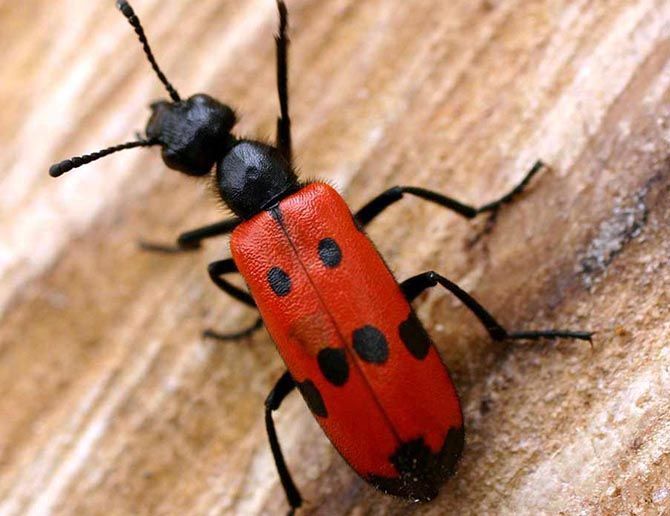
KARAKUT
Few of us do not have an aversion to spiders, no matter what type they may be. The Karakut is a poisonous spider that lives in the southern regions of the world. In Russia, its habitat is in the steppes of the Astrakhan region. However, recently this species was discovered in the Saratov and Volgograd regions.
The male of this insect is harmless; the female karakuta is dangerous to humans and some species of animals. Its bites can be fatal to horses, camels, and humans. However, the spider does not attack without reason; it attacks the enemy only if it believes that it is in danger.
The venom of the female karakuta is very strong and is second only to the venom of the black widow spider, but is contained in the blood of the bitten individual for much longer. The main period of activity of the karakuta falls on June - July, since it is during this period that the migration of female spiders occurs. Sometimes they can migrate to the northern regions, including the Moscow region. A spider bite usually immediately causes severe, burning pain, and the venom spreads throughout the body within half an hour. Usually, a bite from a female karakuta leads to clouding of consciousness and delirium. There are known cases in which, without timely medical care a spider bite caused death. Currently, insect poisoning work is being carried out in the karakut habitats in order to protect people and livestock living in the area.
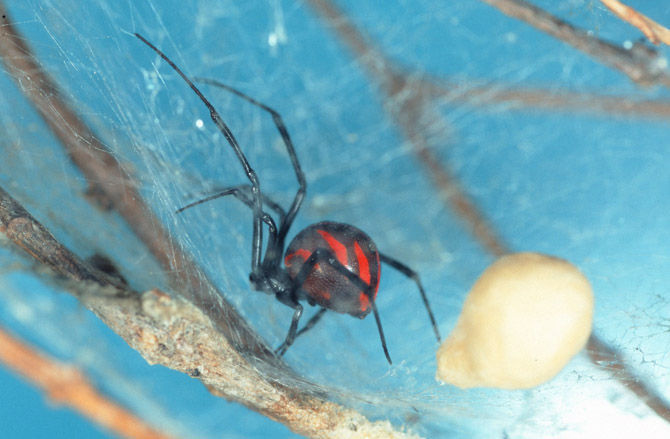
ASIAN GIANT HORNET
The Asian giant hornet is a very rare insect that poses a significant danger to humans. It mainly lives in Asian countries such as China, Japan, and India. In Russia, the Asian hornet is found in the Primorsky Territory. Due to its size and coloring, it is even called the tiger bee in China. Its size is really large: the hornet reaches more than 5 centimeters in length, and its wingspan is more than 8.5 centimeters. This insect also has a long stinger, which can be 6-7 millimeters long.
The venom of the Asian giant hornet is extremely toxic and dangerous to humans. This poison contains the substance mandorotoxin, which causes severe pain And allergic reactions. People who are allergic to bee and wasp stings are likely to die if they are stung by an Asian hornet.
Some other toxic substances that are part of the venom may attract other hornets of the same species. Moreover, the Asian hornet, unlike a bee, can use its sting many times. To obtain food, the Asian giant hornet uses its jaws, which are unusually strong. With them he can crush prey, the role of which is played by small insects.

Users of the popular WhatsApp messenger scare each other with a scary killer bug. A banal search on the Internet reveals dozens of justifications for deception, but the photo still wanders from one chat to another, writes Karavan.
“Be extremely careful and warn your children!”, “Death within two hours”... I, as a respectable mother, am a member of several parent WhatsApp chats, and every time someone sends a photo of a frightening-looking insect with threatening warnings. At this point you can’t help but think: maybe all the karakurts, tsetse flies and ticks really have a serious competitor?
A search on the World Wide Web produced several dozen links to the required news. All of them are dated last fall. As the unnamed authors claim, the new insect appeared in India and is most likely the product of a scientific experiment that got out of control. And supposedly there are already victims.
“If you ever see this insect, do not try to kill it with your bare hands or even touch it. Upon contact, a person becomes infected with a virus that quickly affects the entire body. This horror was first noticed in India. Share this information with your family and friends. Let children be especially careful, because they love to pick up all sorts of bugs and insects,” warns one of the news aggregators.
But the search for a photo of an insect unknown to science refers to images of a water bug that has been fully studied by entomologists. As it turned out, the supposed capsules with poison on the back of an unknown animal are carried by the young animals of its giant water bug, which actually lives in India, for greater safety.
– A person believes in what he wants. Anyone who has critical thinking and a high level of intelligence usually checks such controversial news without difficulty, but, unfortunately, not all of them. Some people, it seems, generally enjoy frightening others with such fakes (fakes. - Ed.), - comments the director of the Legal Media Center Public Fund, Diana OKREMOVA, on the regular distribution of horror stories on social networks.
She herself often organizes seminars for young journalists, where she explains in detail how to spot fake news. But it seems that with the development of the Internet, this kind of educational program must be carried out for the entire population.
– Any publication must give a specific answer to three questions: what, where, when? With newsletters on social networks, everything is a little more complicated, because the information is compressed into one or two sentences. But there still needs to be some specifics that can be verified, says the media expert.
Diana Okremova advises to be especially careful about publications that begin with the words: “Attention!”, “Very important!” and ending with the words: “Maximum repost.” Often such loud calls serve one purpose: to attract the user’s attention to something insignificant and distract from something important.
For some people, the bug is associated with a domestic bloodsucker, while others think of it as an agricultural pest that spoils grain crops. But our planet is inhabited by a huge variety of arthropods from different families, distinguished by their unique body structure and habitat.
Giant water bug smoothy
One of the most amazing representatives of aquatic hemipterans is the giant water bug - Belostoma, reaching 15 centimeters in length. They live in freshwater ponds and lakes in India and Thailand, and these giants are also found in the North American state of Florida, where they received the nickname “alligator ticks.” In addition to the whitefish, the hemipterans that live in the water include the familiar smooth fish, the water strider and the paddlefish, which can be found in the waters of our country.
Water bug photo
The smoothie lives up to its name with a smooth, streamlined, boat-shaped body. The aquatic hemipteran has three pairs of legs, the hind ones of which are the longest and covered with bristles and serve as oars. From the surface, the insect captures a bubble of air, which it breathes and which affects its buoyancy. This bubble is located in the lower part of the abdomen. On his head he has two large eyes, relative to his body.
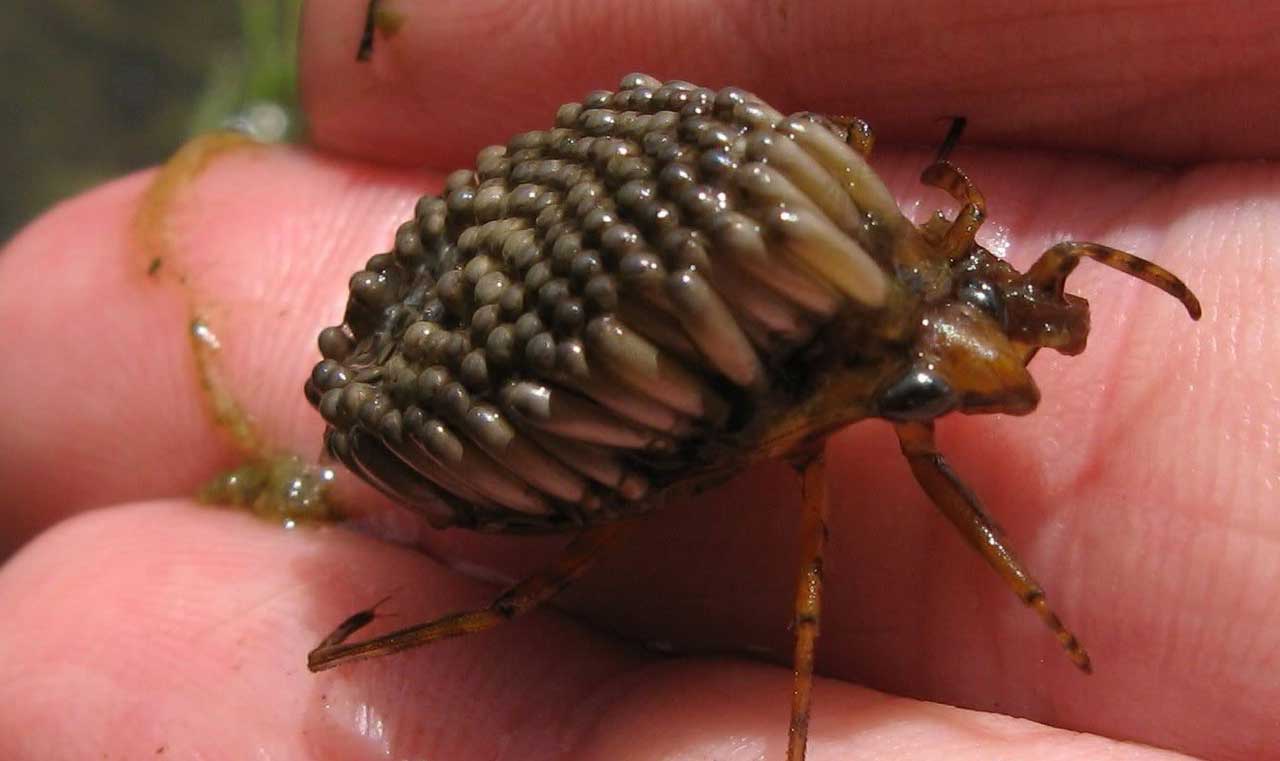
The giant hemiptera differs from representatives of another family in that its hind legs are designed for swimming, and not for moving on land. The front legs are massive, claw-like and shorter than the others. The legs end in claw-like hooks, which are needed for securely capturing and holding prey.
The inability of adults to breathe underwater forces them to rise into the open air. The respiratory apparatus consists of two tubes and is located on the abdomen of the arthropod.
A bug capable of flying rises to its wings only if it moves to another body of water in search of food, or is attracted by the light of lanterns in the dark. Its wings are membranous, transparent, with dense brown elytra.
The individual characteristics of the male include his ability to make sounds very similar to the chirping of a grasshopper. This sound appears when the front paws rub against the proboscis.
The smoothie lays its offspring in the form of eggs on the bottom of the pond, attaching them to plants. Egg maturation occurs within two weeks, and the warmer the water, the faster this process occurs. The larvae are similar in appearance to the adults, but lighter in color. During the summer they undergo four molts, and the shed chitinous cover so closely resembles the outlines of the arthropod itself that it can be confused with a living creature.
The giant hemipteran is distinguished by a unique relationship between males and offspring, since females lay eggs on their elytra and then the father takes all care of them. A clutch can contain up to 100 eggs. In the spring, the male, covered with eggs, becomes like a hedgehog.
Predatory water bug or not?
The aquatic hemipteran is a predator. Even small fish and frogs can become prey for the belostomy, but mainly the insect eats fish fry, tadpoles, mosquitoes and their larvae.
Gladysh differs from other hemiptera in its swimming technique. After immersion in water, the insect turns over with its belly up, which allows it to control the surface of the pond and thus hunt. The insect prefers to live in a standing or slow-flowing pool, but it can also be found in large puddles and in barrels of water.
The giant hemipteran watches its prey on a stone or plant and when the prey is very close, it grabs it with its front legs and pulls it to its mouth.
All hemiptera feed equally. They insert a proboscis into the body of the victim and inject special enzymes into it that decompose internal organs victims, then suck out the resulting liquid.
What are smooth water bugs afraid of?
Being a predator, the bug itself can become prey. But the light back and dark belly, capable of changing color depending on the bottom of the pond, allow Notonecta to be invisible from the depths of the water for fish and from above for birds.
Are water bugs dangerous to humans or not?
Waterbug bite photo
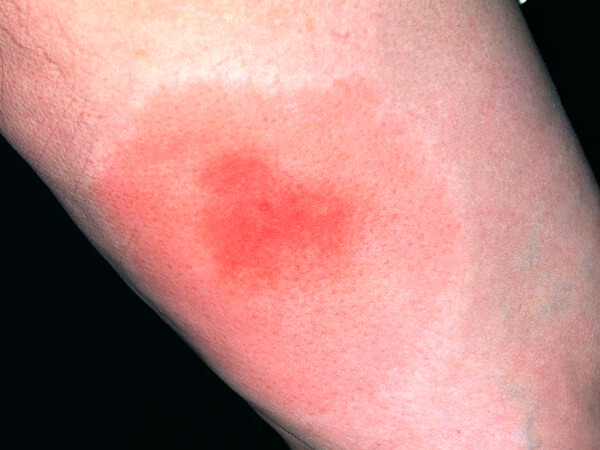
How to get rid
There is no need to think about how to get rid of the smooth water bug, because it does not pose a real danger to humans. These hemiptera occupy an important place in the food chain, using mosquito and horsefly larvae as food. And belostomas hunt the three-keeled turtle, which threatens juvenile commercial fish. Therefore, an aquatic hemipteran, even the largest, is not a creature that should be feared and destroyed en masse.
